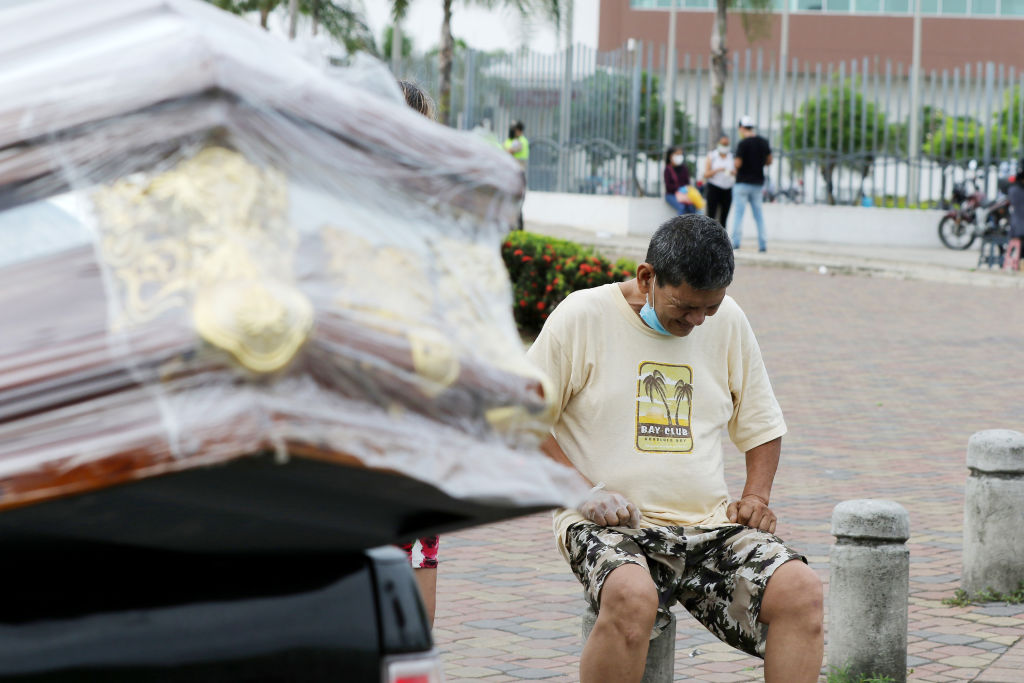
Horror videos posted on social media last week of residents of the Ecuadorian coastal metropolis of Guayaquil abandoning corpses in the streets while vultures circled overhead underline the extreme vulnerability of emerging nations to the novel coronavirus.
Media coverage has presented it as a largely developed-nation pandemic. Iran is shown as the only emerging nation where it has run out of control; however, that simply reflects the paucity of data elsewhere.
A new study led by an eminent US economist, Harvard’s Robert Barro, shows the same was true during the Spanish flu 100 years ago: the poorest were hit the hardest.
Australia, by contrast, stands out both during the Spanish flu and today with the coronavirus as one of the least affected nations.
The global coronavirus data collected by the Johns Hopkins University in Baltimore shows that only 0.8% of the observed cases in Australia are resulting in death, compared with 12.6% in Italy, 11% in the United Kingdom and 3.2% in the United States.
The only nations with lower fatality rates than Australia are Singapore, at 0.4%, the United Arab Emirates, at 0.5%, Israel and South Africa, both at 0.7%, and the small populations of Qatar, Iceland and Bahrain where rates are 0.3%, 0.4% and 0.6%, respectively.
The fatality rate among observed cases varies, depending on the extent of testing and identification of cases in the community. Johns Hopkins shows the same pattern is seen when looking at fatality rates across the entire community. It’s 0.18 per 100,000 people in Australia, compared with 28.3 in Italy, 9.3 in the UK and 3.9 in the US.
While some estimates suggest that the Spanish flu infected a third of the global population, the study by Barro characterises that figure as ‘speculative’ and says the fatality rate across the community is a more reliable figure. Barro used estimates of flu deaths from the countries that recorded them, and measured the increase in the death rate between 1918 and 1920 for countries that did not (after making allowance for World War l).
The study confirms the widely held proposition that the flu killed more than the war in total; however, that wasn’t the case for the main combatant nations, including Australia. The flu deaths were concentrated in poor nations.
Based on data from 43 nations, the study shows 39 million died from the flu, or 2.0% of the world population. Estimates of World War l deaths vary, but the study says the most reliable figure is 6.2 million direct combat-related military deaths.
Australia missed out entirely on the first wave of the Spanish flu in 1918, thanks to its strong maritime quarantine measures. It was affected by the waves that followed in subsequent years, but the overall fatality rate was only 0.3% in Australia, which was among the lowest. This compared with 1.1% of the population being killed during the war.
Germany lost 2.7% of its population during the war compared with 0.8% to the Spanish flu, while the comparable numbers for the UK were 1.4% during the war and 0.5% to the flu.
The Spanish flu hit hardest in India, where it killed 5.2% of the population, and South Africa ,where 3.4% died. Other nations with elevated rates included Indonesia (3%), Mexico (2.1%), Russia (1.9%) and China (1.4%). With their large populations, India accounted for 43% of all deaths and China 21%.
Scaled up to today’s population, the mortality rate from the Spanish flu would translate to 150 million deaths, vastly more than the 82,000 deaths recorded from coronavirus so far.
As the reports from Ecuador last week illustrate, the actual deaths from coronavirus are running at a much higher rate than the official figures, which, in Ecuador’s case, show only 3,995 cases and 220 dead. The Guardian cited a regional politician saying 480 death certificates were issued in a single day in Guayaquil last week, while President Lenin Moreno announced that 2,000 cardboard coffins were being issued.
The crowded cities of the emerging world, such as Lagos, Cairo, Sao Paulo, Manila, Jakarta, Mumbai, Dhaka and Karachi, are highly vulnerable, despite the very low reported cases from these locations so far. Nigeria, for example, has reported 254 cases and six deaths, while Bangladesh says it has 164 cases and 17 deaths.
Governments are ordering quarantines in many emerging nations, but they cannot be effective when people are living cheek by jowl in shanty towns such as those of Mumbai, Sao Paulo or Manila. In the absence of any social safety net, people are compelled to work if they are to eat.
Pakistan’s Prime Minister Imran Khan commented on Twitter a few days ago: ‘In the subcontinent, with a high rate of poverty, we are faced with the stark choice of having to balance between a lockdown necessary to slow down/prevent the spread of COVID19 & ensuring people don’t die of hunger & our economy doesn’t collapse. So we are walking a tightrope.’
Not only is the emerging world most exposed to the health impact, but it’s also the most vulnerable to the economic effects of the crisis. Barro’s paper said that during the Spanish flu, economies suffered a contraction of around 3% for every percentage point increase in the mortality rate. India’s economic output, for example, fell 15% between 1916 and 1918.
According to the Institute for International Finance, global investors already pulled US$61 billion out of emerging economies in the first three months of the year, which is double the capital withdrawal at the peak of the global financial crisis.
Countries like Indonesia, Turkey, Argentina and South Africa with current account deficits and large US dollar debts are the most exposed to the capital flight, with financial instability likely to develop there.

